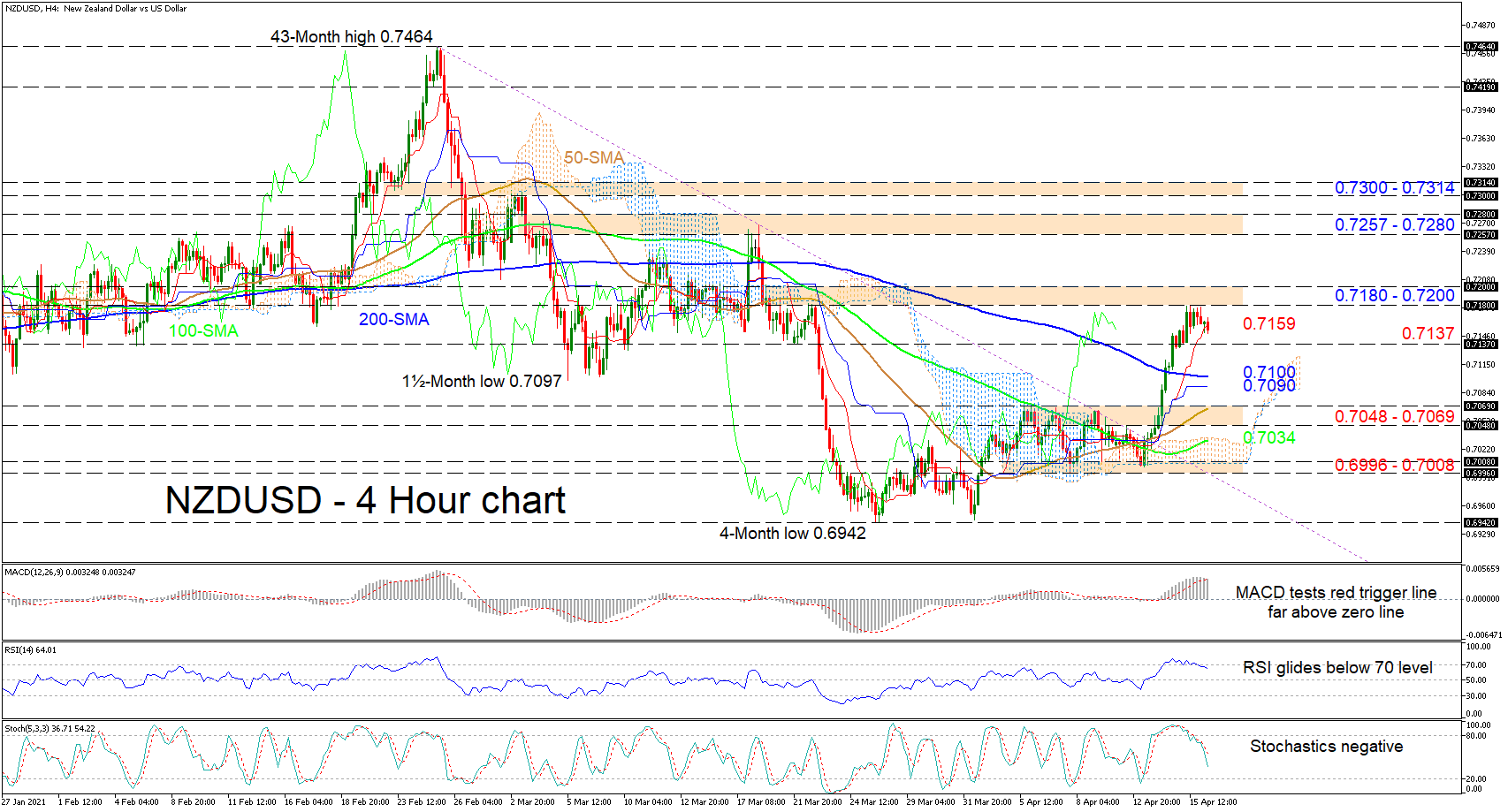 NZDUSD has recoiled to the red Tenkan-sen line at 0.7159 after its recent aggressive positive impetus hit a minor snag at the resistance section of 0.7180-0.7200. The former level happens to be where a plummet in the pair started back on March 22, which sent the pair to the four-month low of 0.6942. The rising 50- and 100-period simple moving averages (SMAs) are backing the latest bullish form in the pair.
NZDUSD has recoiled to the red Tenkan-sen line at 0.7159 after its recent aggressive positive impetus hit a minor snag at the resistance section of 0.7180-0.7200. The former level happens to be where a plummet in the pair started back on March 22, which sent the pair to the four-month low of 0.6942. The rising 50- and 100-period simple moving averages (SMAs) are backing the latest bullish form in the pair.
The stalling in the price hike is being mirrored in the flattening of the blue Kijun-sen line, while the soaring red Tenkan-sen line suggests hardly any waning in positive momentum. The short-term oscillators are reflecting the slight pullback in the price however these current negative signals appear unconvincing to mature this move. The MACD, deep in the positive region, has rolled towards its red trigger line, while the RSI has slid just below its 70 level. Furthermore, the negatively charged stochastic oscillator is endorsing extra retreats in the price before more gains could take shape.
If selling interest increases, initial downside constraints could come from the 0.7137 low. Diving from here, the bears could encounter the 200-period SMA and the blue Kijun-sen line at 0.7100 and 0.7090 respectively, before aiming for the 0.7048-0.7069 support region. Should the price then dip below the 100-period SMA – currently at 0.7034 – and the cloud, the 0.6996-0.7008 support base could come into the spotlight.
On the flipside, overcoming the tough buffer zone of 0.7180-0.7200 is critical to reinforce upside momentum. Should buyers succeed, they may then catapult the price towards another resistance boundary residing between 0.7257-0.7280. Sustaining sufficient buying interest could then lift the pair to challenge the 0.7300-0.7314 obstacle.
Summarizing, NZDUSD is under negative strain however no clear-cut bearish signals are cementing a deteriorating bias, as long as the pair holds above the 0.7137 barrier.

Origin: XM










